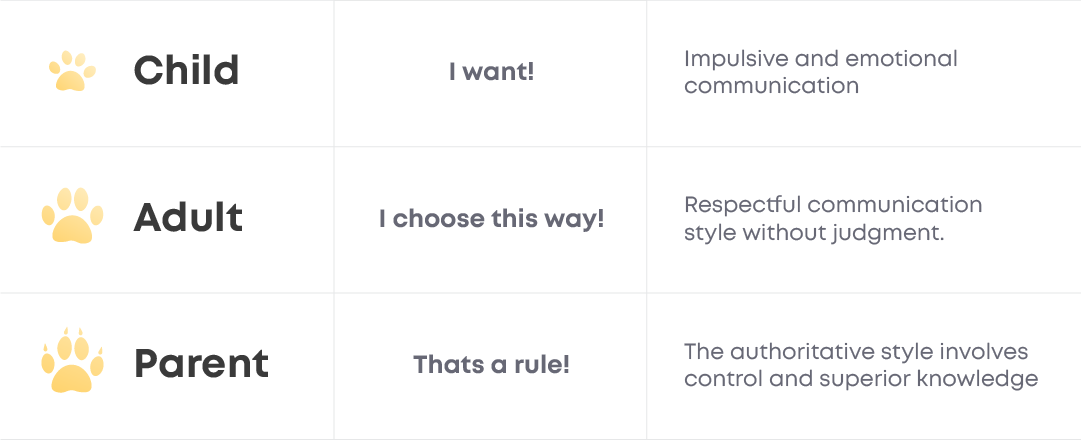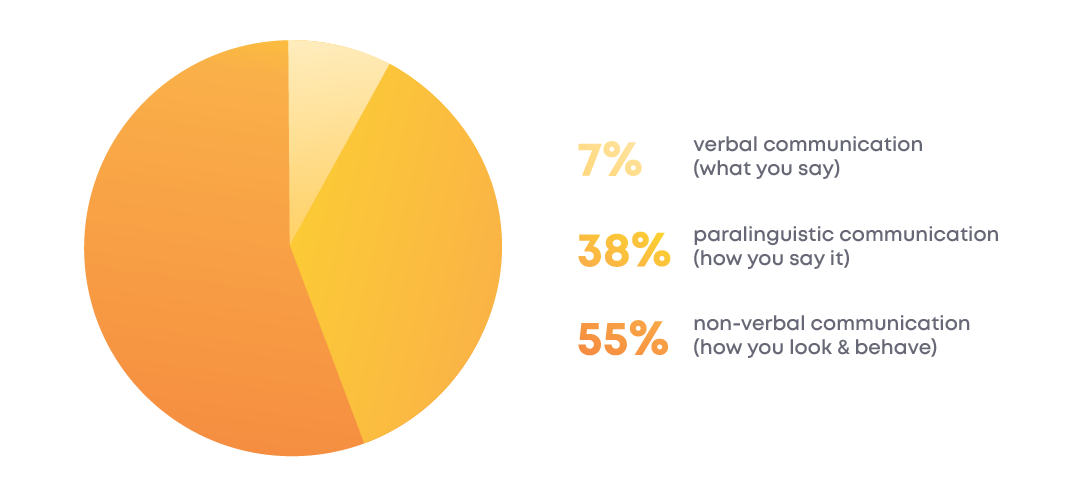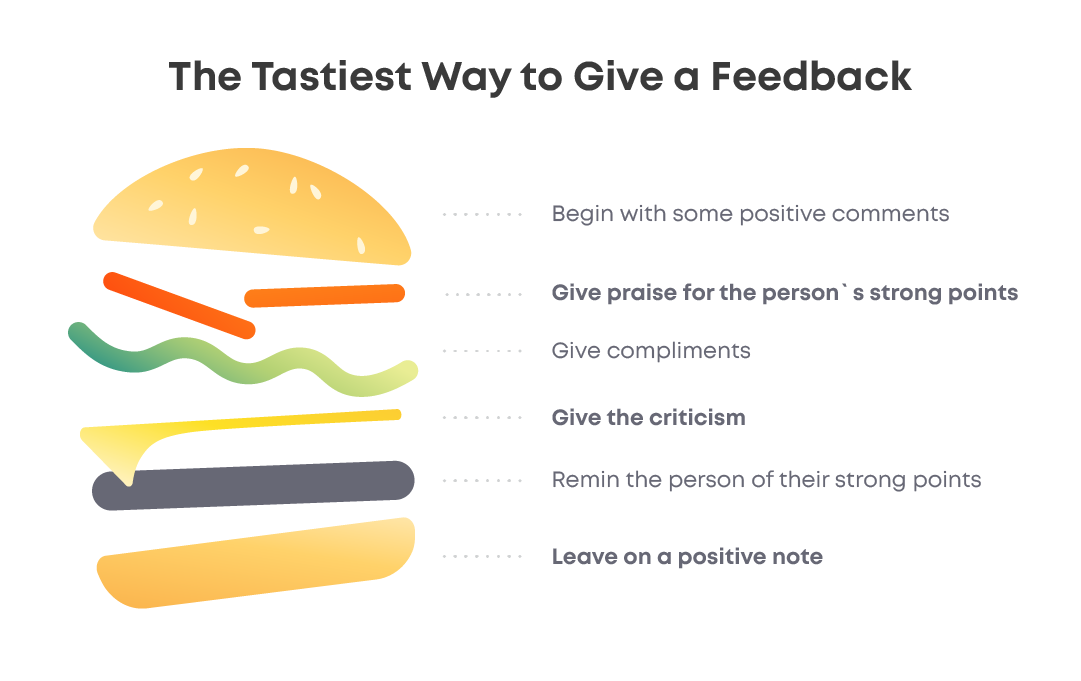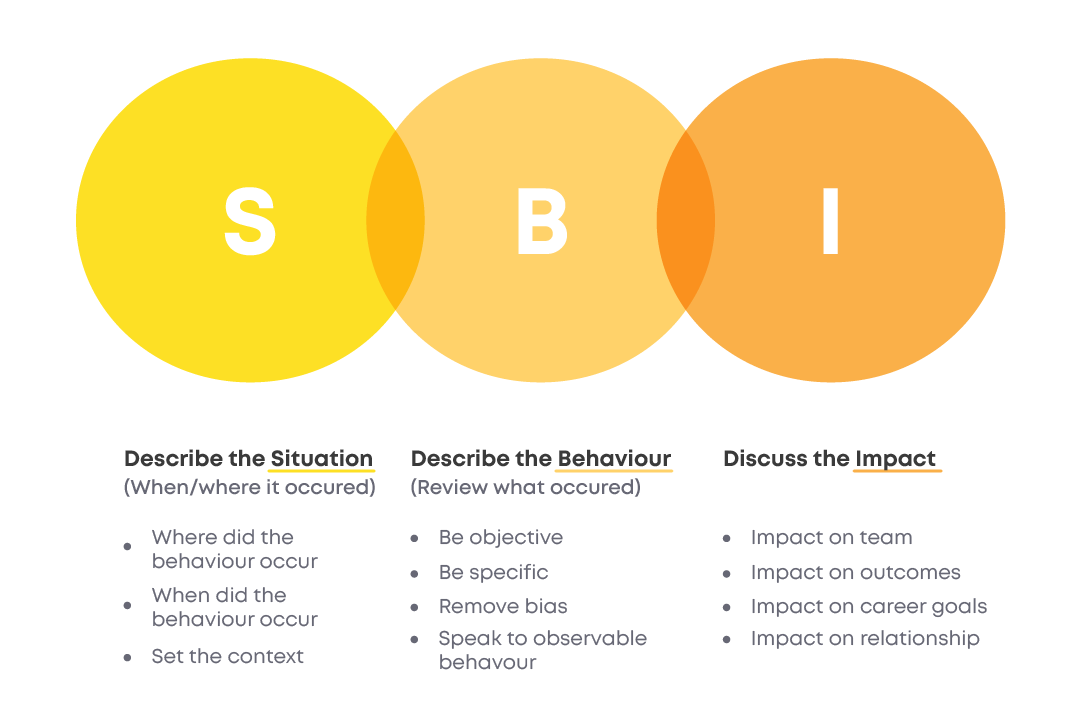If you are in custom software product development for a while, you probably know that the key component of the 1:1 meeting is feedback exchange. However, sharing constructive feedback is not an inborn skill. We stumble upon mental blocks that keep us away from articulating our thoughts. We are not certain whether another participant in the meeting gets you right. We feel uncomfortable telling people what we don’t like about their work or behavior, especially if that person is your manager.
Hence, you’ve got to learn how to give feedback so that you deliver the right idea to the person you communicate with. In this article, you will learn what is effective feedback and what techniques you can use to give or receive one.
Challenges Associated with Sharing Feedback
People react to a constructive evaluation of their work, results, or behavior in different ways. Some have mastered the skill of looking at feedback analytically and focusing on positive intentions. Others are not ready to hear anything else but praises.

So, why is that happening that some folks find getting feedback stressful? No worries, that’s a natural reaction inherent to all human beings. Let’s see why this behavior takes place.
A Misconception That The Feedback Giver Is in Position of Power
If you’ve ever had to give feedback to your manager, you know that it’s pretty tough. Although it may feel like the feedback provider is in complete control of the communication, it’s not the case. A 1:1 meeting is a two-way interaction, meaning the feedback receiver holds 50% of the dialog. Successful feedback occurs when all participants of the meeting see themselves as equal.
Giving Feedback Is One Thing, What Matters Most Is The Response
Here is a fascinating fact. 1600 Google users search for tips on how to give feedback every month, while only 210 people wonder how to receive it. Alas, not that many people focus on the culture of getting feedback.

For example, a person providing feedback may say the right words at the right moment. However, the success of the interaction will mostly depend on the receiver. After all, what matters is their emotional and intellectual condition, which will shape the reaction.
So, it’s not always about what you say. In most cases, and this is absolutely natural, the attitude, state of mind, and expectations will color the perception of the feedback receiver and influence their behavior.
It’s Awkward to Give Negative Feedback
Telling the person what they are doing wrong is embarrassing. But let’s look at negative feedback from a slightly different angle.
First, there is no such thing as positive or negative feedback. All the insights or recommendations have a common mission – to become a more effective team member and bring better results.
Second, let’s treat negative feedback as a corrective one. Hence, 1:1 meetings that cover negative aspects of your behavior aim to pinpoint where you may not be successful or effective and suggest ways to improve your performance.
A Freud’s Theory Explains It All
From a psychological standpoint, in particular, Freud’s personality theory, our psyche is structured into three parts:
- Id – is a primitive and instinctive component responsible for our desires.
- Ego – what a person thinks of themselves.
- Superego – reflects society’s moral values and serves as the source of self-criticism.

There is a saying that it’s hard to look in the mirror showing the reality of our true existence. The perception of ourselves (ego) is frequently different from how other people perceive us (superego). We are unwilling to accept that society may notice some of the negative aspects of our behavior. So, instead of working on eliminating the flaws, we tend to play the role of a victim and blame the feedback giver. Hence, we avoid getting feedback as it may hurt our ego.
Our Brain Is Wired for Neglecting The Unknown
When our brain perceives a situation as stressful or frightening, it triggers a fight or flight response. Evolutionary, this type of response was inherent to our ancestors living in a dangerous world. As these days there are fewer threats, our brain still carries this behavioral pattern and perceives social threats similarly to physical ones.
So, our brain doesn’t see the difference between negative feedback and the chance of being eaten by a predator. It triggers two basic responses: to fight back or run away from circumstances where feedback is possible.
We Play a Specific Role
When interacting with others, we may play a particular role. This theory is introduced by Eric Berne and it suggests that we follow life scripts in our communication with other people.

These patterns can be found in work relationships as well. When communication runs in the child-parent scenario, it will most likely lead to misunderstandings. The person in the parent position won’t be able to deliver constructive feedback, and the child won’t accept it. So, perfect feedback happens when adult-adult communication takes place.
We Just Perceive Information Differently
We perceive information in different ways depending on our life experiences, mood, or situation. This results in cognitive bias, which is known as a situation that involves conflicting behaviors, attitudes, or perceptions. It happens when one creates a subjective reality based on their own perception and may significantly make the feedback exchange process more complicated.

There are a few types of cognitive bias you may encounter when delivering or getting feedback:
- Exaggeration / underestimation happens when one sort of information gets overestimated while other facts are downplayed. Usually, it involves devaluing positive things with a strong focus on negative aspects of the situation.
Example: It was just luck that I passed the exam with flying colors. - Fatalistic attitude entitles the tendency to make negative predictions and see catastrophic outcomes in different situations.
Example: On seeing the piece of news about the economic crisis, the person develops this train of thoughts: the company will have a hard time => I will get fired => I won’t find another job => I won’t have money for living => I will become homeless. - Emotional thinking keeps people away from making factual judgments. Instead, subjective emotions rule.
Example: I feel that I am a loser, so I am a loser. - Generalization makes people prone to making general conclusions based on a few facts.
Example: a person made one mistake when working on a task, and that made them feel, “I am worth for nothing. I can’t handle even a simple task.” - All-or-nothing thinking means that a person goes to extremes. They evaluate the situation from the right-now position, totally forgetting about the background or previous experiences.
Example: a manager makes a remark, and a person drives a conclusion that the manager is too demanding, completely disregarding the previous communication experience and relationships.
What Is Effective Feedback?
One can get constructive or biased feedback. Nevertheless, our goal is to help the person we communicate with understand what they did and did not do to reach the company’s goals. So, we define effective feedback as one having the following features:
- Timely
- Fair
- Honest
- Easy to understand
- Mutual
Tips for Effective Feedback Exchange
Every communication, including feedback sharing, has a certain percentage of correlation between its components. Here is a chart illustrating how communication elements tie in.

As you see, verbal communication makes up only 7% of the interaction, while non-verbal signals as gestures, facial expressions, body language, space, etc. matter the most.
So, to set up effective feedback sharing, one should consider different aspects that refer to communication. Here are the tips on how to get ready and set up a meeting that will bring great results.
1. Establish a Non-Verbal Contact
Your non-verbal communication is the foundation that will determine how your communication will flow. So, when you start a meeting:
- Set up eye contact. This step becomes even more crucial for remote workers. When you have an online meeting, ensure all participants have their cameras on to avoid having the impression of talking to a blank screen.
- Maintain a positive facial expression. Have you ever noticed that talking to a smiling person is much easier than to a grumbling one? So, smile when you start a conversation since this will promote friendliness, acceptance, and openness.
- Mind your tone. Intonation defines your pitch and how your communication partner will accept your message.
- Consider speech volume and pace. Do not be too loud or fast – that’s the surest way to get your message ignored or accepted the wrong way.
- Send the right messages with your gestures. Control the movement of your hands, face, or other parts of the body to convey the right message.
2. Know Your Objectives
Every 1:1 meeting should have a goal. However, no matter your objectives, we believe that a positive attitude should be the core. Even if you arrange a meeting with corrective feedback, it’s essential to focus on the positive side of the conversation – striving to become more effective or proficient.
Also, you should be in the loop of the previous results. At the same time, you’ve got to focus on long-term goals that will bring positive results in the future.
3. Talk About Behavior, Not Traits
When you provide feedback to a manager or employee, it is advised to discuss the behavior, not a specific trait or the personality in general. Do not forget that you share your insights or opinion, so it’s better to stress this out verbally.
For example:
- You are very unattentive.
- It seems to me that sometimes you do not pay attention to detail, which makes me feel stressed because we miss the deadline.
“I” messages are also powerful instruments you can use when giving feedback. They are great because they depict your impressions, thoughts, and feelings while describing a particular situation.
For example:
- I feel time pressure when you do not submit a task on time.
Using these sentence constructions, you do not insult or offend a person. On the contrary, you explain how you feel when a mistake happens. It switches a focus from a personality to your vision and perception of the situation.
4. Be Specific
When you arrange a 1:1 meeting, there is no room for beating around the bush. You’ve got to describe the situation you would like to discuss in detail to ensure all participants in the conversation understand the point.
5. Be Proactive and Ask Questions
Remember that a 1:1 meeting is not a one-way conversation. Ideally, you should contribute 50% of your effort, just like your interlocutor.
You can use three main tactics to stay at the peak of engagement during the interaction:
- Paraphrasing – you put the idea of another meeting participant into your own words.
- Confrontation – you hint that the words, actions, or behavior of the other person do not coincide with each other.
- Summarizing – you bring together all the ideas or points that you have discussed.
These instruments also help ensure you stay on the same page and there are no deviations in how each of you percepts this or that statement.
6. Respond Timely
It’s vital to pick the right time to share your feedback. It’s a bad strategy to get back to the situation after a few months when the details have been blurred in your mind. The sooner you get to discuss what happened, the better.
7. Pick the Right Moment
At the same time, we do not recommend rushing to arrange the meeting when emotions are high. Wait till you gain control over your emotions and can think rationally.
Also, make sure that both of you are in a good mood and physical state. This way, both of you will be able to focus on the conversation.
8. Share Ideas for Improvement
Encourage the interlocutor to self-reflect using indirect phrases like:
- As you look back at _____, could you have done something in a different way?
- What will happen if _____?
Methods of Giving Valuable Feedback
Giving constructive feedback is a valuable skill. But unfortunately, it’s not always easy because you may be afraid that your words may hurt someone’s feelings or they might take your message wrong. Also, the truth is that poorly delivered feedback can do more harm than good, no matter how good your intentions are.
So, how do you deliver quality feedback in a way that is beneficial for an individual? Here are a few techniques.
Important!Even though there are numerous methods of delivering feedback, and managers may use them in their practice during 1:1 meetings, it’s important to keep in mind that the conversation should be open. Sometimes sticking to specific feedback methods is not relevant to the situation or a person. Hence, a manager is free to be flexible during the meeting to provide constructive feedback. |
The Sandwich Method
The sandwich method is one of the most popular forms of delivering feedback. It encompasses wrapping negative feedback in praise. So, feedback starts with positive things, compliments, or strong points of a person. Then, there is a portion of criticism followed by appreciative words.

Yet, this is not by far the most effective feedback delivery method. The essence of your message can get lost among numerous compliments and praises, while the most important things will be left behind.
The SBI Method
The Situation-Behavior-Impact method outlines a simple structure you can use to deliver feedback effectively. This form of feedback is very straightforward, simple, and direct. At the same time, it reduces the defensiveness of the recipient and the anxiety of delivering feedback, even the corrective one. In most cases, we rely on this technique during 1:1s or other meetings.

At first, you capture the situation and recollect the details (when and where the behavior occurred and what the context was). Then, you move to describing a specific behavior observed. Finally, you specify what impact the described behavior had on the team, relationships, project, company, etc.
ExampleSubjective feedback: PM didn’t arrange tasks with the team. This feedback sounds vague and lacks details. So, let’s see how the SBI method will translate the person’s message. |
| SBI feedback: Situation. Yesterday during the meeting with a client, you said that the task would have been ready by Friday without checking it with the team. Behavior. When I raised this question during the internal meeting, you said that the task is rather small and we can easily make it by Friday. Impact. That made me think that my words and thoughts do not have any value and that I am not treated as a professional. Action (bonus). I wish we could arrange the task delivery before you commit it to the Client. |
Now You Know the Nitty Gritty of Feedback Delivery
As it turned out, life didn’t prepare you for sharing feedback with your colleagues. Luckily, you can master this art by following the tips and using the SBI method.
We wish you good luck during your next 1:1! We bet you will feel at ease when your time to speak up comes.






